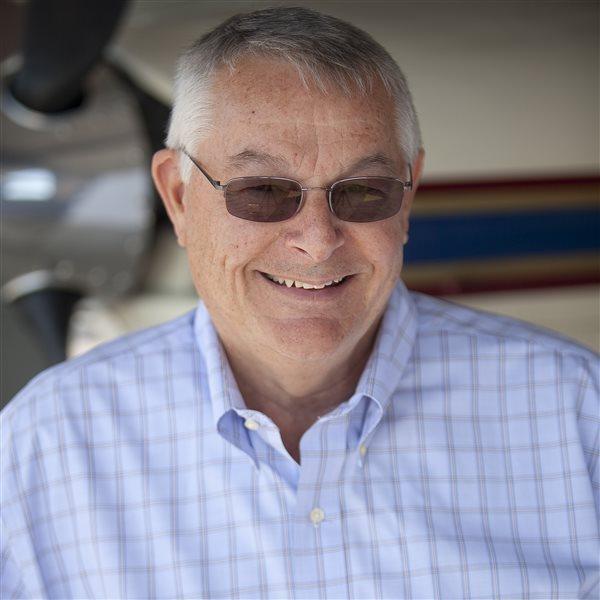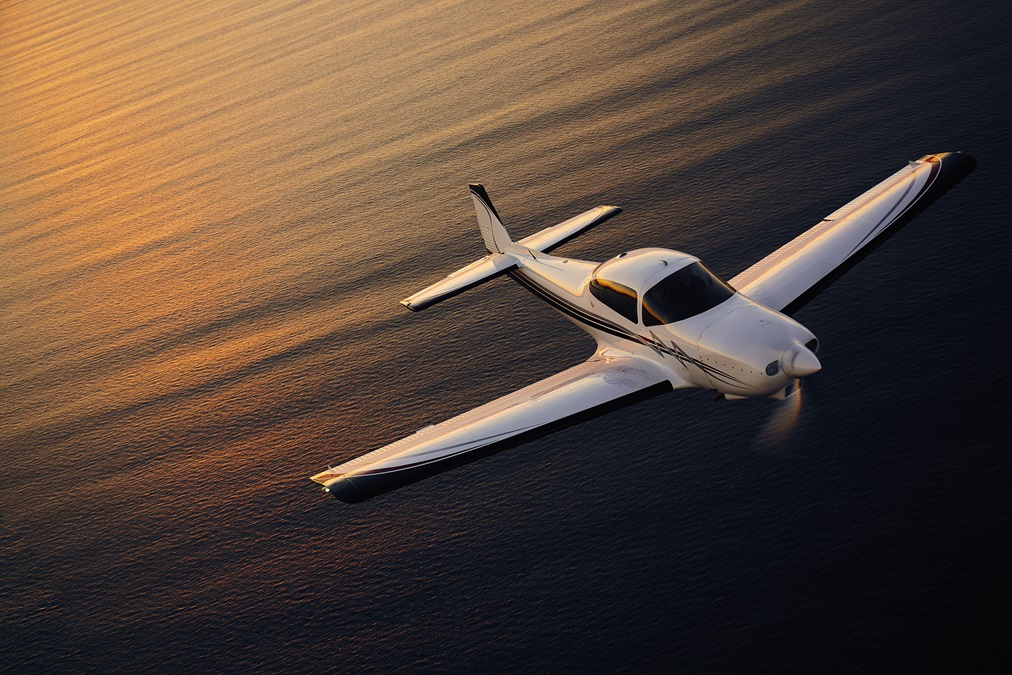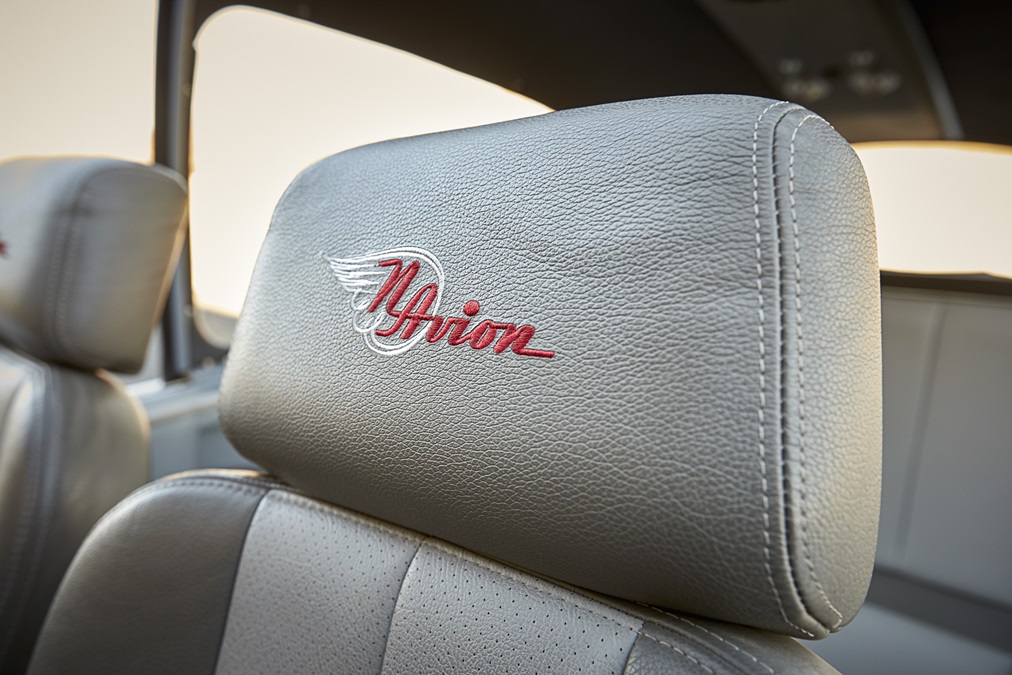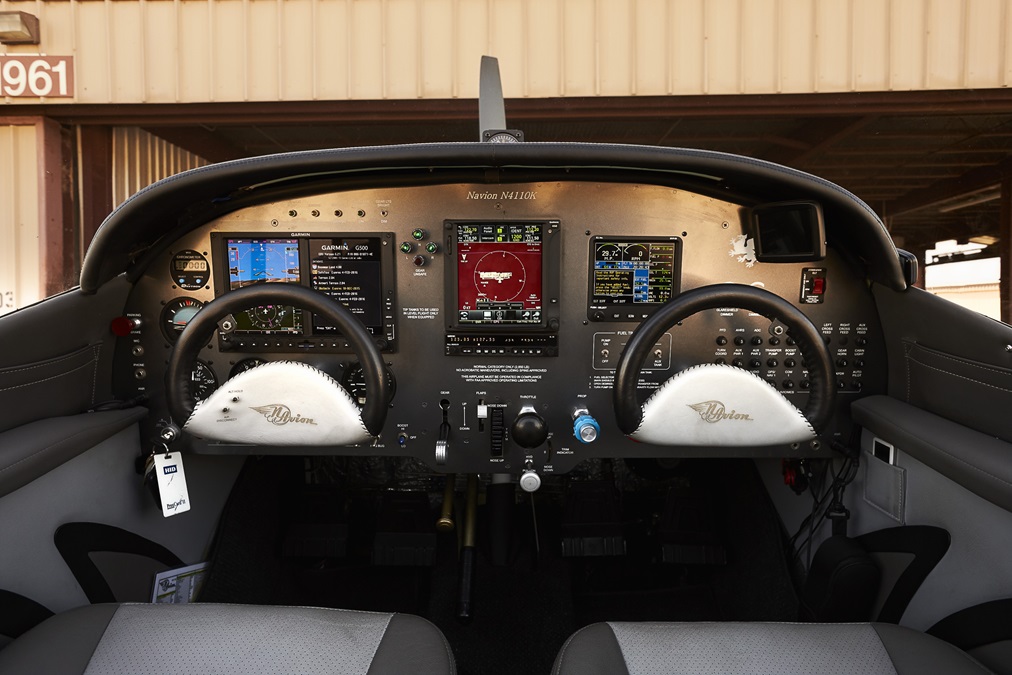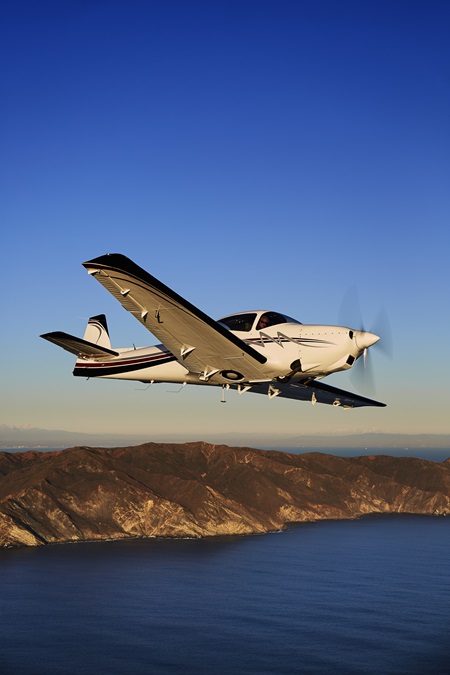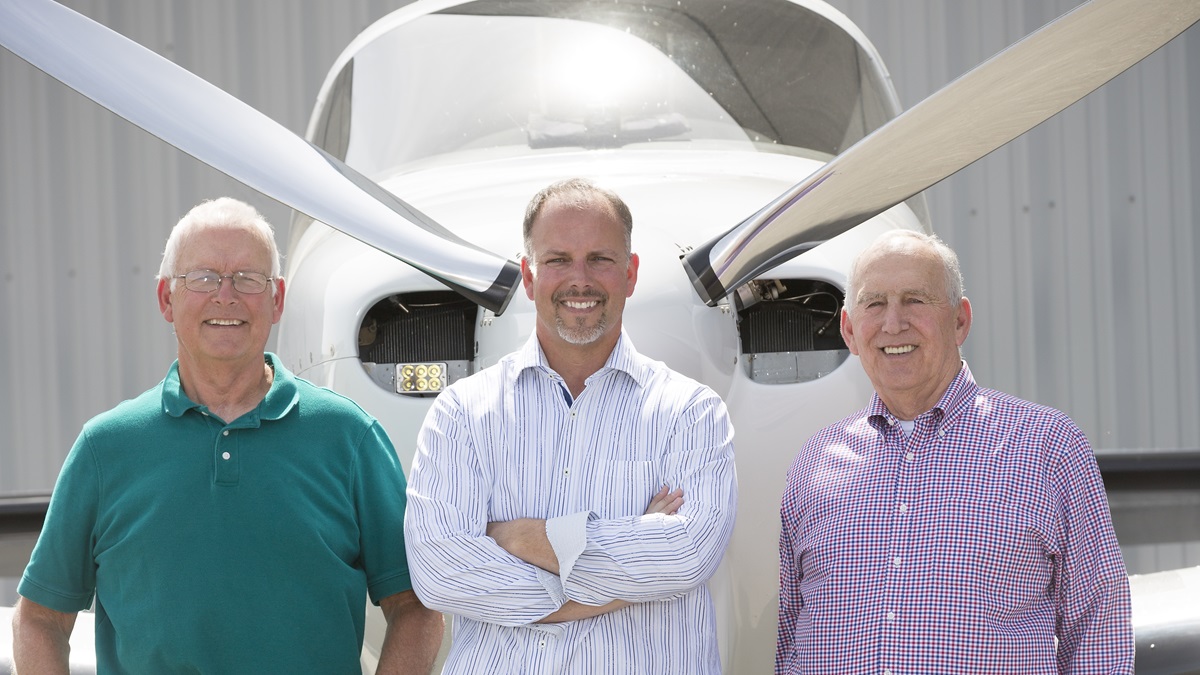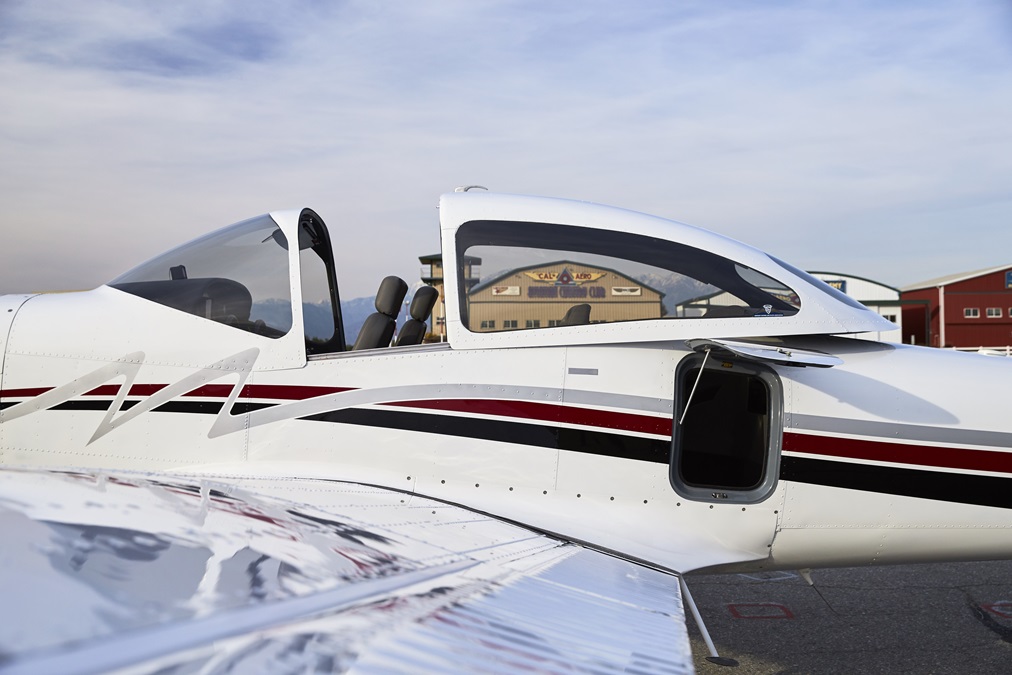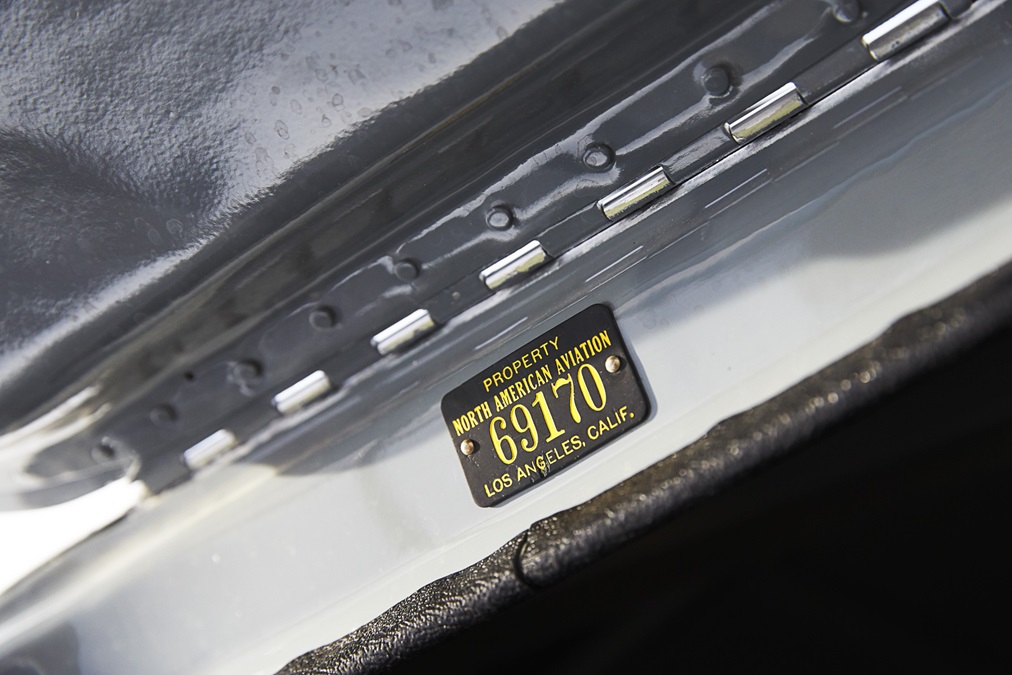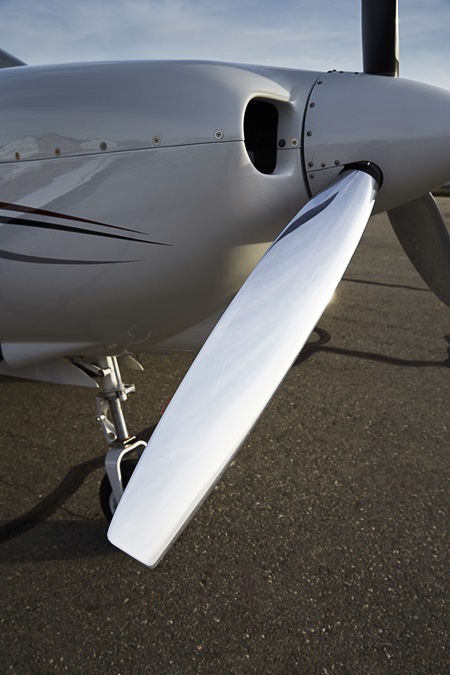Seeing is believing
Yes, this is a 1947 NAvion
More junk than airplane after 18 years as a derelict, this Navion (spelled NAvion by designer North American Aviation) sat in the tarmac at Bermuda Dunes Airport, California, not on it. The landing gear of N4110K were embedded by the last repaving, its skeleton brittle and corroded. Anyone else would have scrapped it.
Not David Wakefield of Norco, California, who had a personal connection to the airplane. In 2010 he had stopped at Bermuda Dunes to check weather in the Banning Pass near Palm Springs, California, before returning to Chino. He had heard N4110K was there: the 1947 aircraft in which his dad learned to fly, the one he rode in as a youngster, the one that attracted him to aviation. Seeing it was confirmation, and the seed was planted. With financial help from his father-in-law, Jim Theis, Wakefield bought the airplane and trucked it 90 miles to Navion Customs at Chino Airport. He told owners Ryan Douthitt and Stephen Stinis that he wanted it restored.
“David came to us and wanted us to do this airplane. He talked about the avionics suite, talked about paint and interior, and we tried to give it to him softly that, hey, there’s a little more to it than meets the eye here,” Douthitt said.
The deeper they got into the fuselage, the more problems they found. Despite North American’s reputation for building sturdy aircraft—including the P–51 Mustang—Douthitt said the aircraft’s skin was compromised and needed to be re-created from sheet metal.
N4110K was the last Navion built by North American before Ryan Aeronautical took over production and dropped the capital A from Navion (NA was North American’s stock symbol), Wakefield said. Introduced after World War II—2016 is the airplane’s seventieth anniversary—with a 185-horsepower engine, it was big, but slow. Also, North American was losing money on every one of the aircraft. A military version, the L–17, was used as the personal aircraft for U.S. Army Gens. Douglas MacArthur and Matthew Ridgeway between World War II and the Korean War. One even took off from the aircraft carrier USS Leyte in 1950; another launched from the USS Badoeng Strait. Over the years the Navion acquired the nicknames “flying staff car” and “poor man’s P–51.” The standard, no-frills model was called an “aerial pickup truck.”
Wakefield’s restoration climbs like a taildragger at an Alaska short-field takeoff contest, thanks to its 300-horsepower Lycoming GO-480 engine. While his nonmilitary Navion never carried five stars on the side of the engine cowling as MacArthur’s did, it flew pipeline patrol in Saudi Arabia for oil company Aramco. North American bought it back, and it carried test pilots to their jobs from North American’s factory at Mines Field (today Los Angeles International Airport) to the Muroc Lake testing area (now Edwards Air Force Base).
Wakefield learned two important lessons from the restoration: “Whatever you think you are going to spend, just double it. However long it’s going to take, double that time,” he said. He was hoping to keep the cost around $180,000, but it hit $360,000 and the restoration took nearly 15 months. Today Navions in top shape sell for $190,000.
Wakefield said he hopes his experience doesn’t discourage others from restoring a Navion, and apparently it hasn’t; there are more than 1,000 registered with the FAA out of 2,469 built (some sources say a couple of hundred more).
“Nothing is as easy as you think it is going to be,” said Douthitt, whose father, Bob, started Navion Customs. “Each one of these restorations is a little bit different, almost like a can of worms,” Douthitt added. “You’re not going to find any two Navions alike.” His father is responsible for a dozen of the nearly 15 supplemental type certificates used to make changes on Wakefield’s airplane, and he also founded the Imperial Valley Navion Club in 1960. Wakefield is the current president.
Many of the changes were made prior to Wakefield purchasing the aircraft at the end of 2010 from Roger Griffin, Wakefield’s father’s flight instructor. Back then there was a griffin painted on the tail—a mythical king of beasts and birds with the head, wings, and forelegs of an eagle and the rear half of a lion. To honor the aircraft’s history, the mythical griffin now is painted on the instrument panel. The human Griffin was present on the day it flew again in 2012.
Some of those modifications include a rear baggage door, a sloping windscreen, a beefed-up tail, a change in the twist of the wing, a fiberglass engine cowling by Reno Unlimited air racer Matt Jackson of Los Angeles, and changes to the fuel system that include a 20-gallon tank under the rear seat. The aircraft now has 60 gallons total—nearly five hours. The wing tips also are fiberglass. The geared engine was added under a field approval, although today similar approvals are not permitted. The engine’s unique sound identifies Wakefield to those on the ground who know his aircraft.
The airplane sat glimmering in the sun near AIA Flight Center at Chino Airport when I arrived, ready for its close-up. Wakefield keeps the aircraft always spotless.
We jumped over to Corona, where Wakefield made what appeared to be a 300-foot takeoff. Afterward we headed east to Lake Mathews for general maneuvering that resulted, as expected, in gentle stalls and solid steep turns. A cruise-speed check resulted in 173 mph true airspeed (150 knots) below 3,000 feet with three aboard.
“I rotate at 65 to 70 mph and get the gear sucked up as quickly as I can, because the gear speed is 100 miles per hour,” Wakefield said. “Then I pitch for 120 and climb at 600 to 900 feet per minute [at gross weight].” After takeoff he reduced engine speed from 3,400 revolutions per minute (2,100 propeller rpm) to 3,000 (1,875 propeller rpm). “For my descent I just set my rpm at 2,600—this engine’s really happy running all day long at that engine rpm—and pull the power back just a little bit.” A geared engine requires a delicate touch.
“You do have to properly plan and manage your energy because you can’t pull back too quickly on the power—
otherwise the gearbox can [be damaged]. That is not a good thing. I get it slowed to 100 mph where you can then drop the gear and flaps for landing. I normally keep it at 80 [mph] for base and 70 over the fence. Stall speed is 54. I true out at 178 mph burning 12.3 gallons per hour at 8,000 to 9,000 feet,” Wakefield said.
Engine operator tips from a 1996 article by mechanical and electrical engineer Chris Schuermann on the Aero Commander website he started include one that the pilot should never let the relative wind turn the prop—that is, it should never “unload” from the engine. When that happens, wind pushes the propeller gear to one side of the gear teeth, then after 15 or 20 degrees of rotation a pulse from the engine bangs it to the other side, then repeats, setting up a chattering sound.
Pending at Navion Customs is a supplemental type certificate application to put a 315-horsepower Continental 550 engine in any Navion. The FAA will require it to be derated from 315 horsepower to 285.
The one place Wakefield splurged was in the panel, adding a Garmin G500 display with a Garmin GTN 750 touchscreen GPS/nav/com. Other goodies include a Genesys Aerosystems S-Tec 30 autopilot with altitude hold and an Electronics International MVP 50 engine instrument display.
After all that work Wakefield has a solid 150-knot short-takeoff-and-landing airplane with a roomy interior and a 600-mile range. His father-in-law, not a pilot, has reliable air transportation. Besides the satisfaction of owning an important part of his family’s history, Wakefield draws attention at airports he visits and gets this question: “What is that?”
“I tell them, ‘A 1947 Navion.’ They’re usually a little surprised by that. Once they see the airplane, they can’t believe it’s a 1947 airplane.”
Email [email protected]
SPEC SHEET
1947 NAvion A (NA for North American)
ORIGINAL Base price: $6,100
Specification
Powerplant | 300-hp Lycoming GO 480-G1D6
Recommended TBO 1,400 hrs
Propeller | 3-blade Hartzell
Length | 27 ft 3 in
Height | 8 ft 6 in
Wingspan | 33 ft 5 in
Seats | 4
Empty weight | 2,150 lb
Max gross weight | 2,850 lb
Useful load | 700 lb
Payload w/full fuel | 346 lb (466 lb std fuel)
Fuel capacity, std | 40 gal (39 gal usable)
Fuel capacity, w/opt tank | 60 gal (59 gal usable)
Baggage capacity | 180 lb
Performance
Takeoff distance, ground roll | 561 ft
Takeoff distance over 50-ft obstacle | 961 ft
Max demonstrated crosswind component | 19 kt
Rate of climb, sea level | 1,400 fpm
Cruise speed/endurance w/45-min rsv, (fuel consumption) @ 75% power, best economy | 178 mph/2.5 hr 8,500 ft (73.8 pph/12.3 gph)
Landing distance over 50-ft obstacle | 1,300 ft
Landing distance, ground roll | 500 ft
Limiting and recommended airspeeds
VX (best angle of climb) | 70 mph
VY (best rate of climb) | 95 mph
VA (design maneuvering) | 124 mph
VFE (max flap extended) | 100 mph
VLE (max gear extended) | 100 mph
VNO (max structural cruising) | 160 mph
VNE (never exceed) | 190 mph
VR (rotation) | 66 mph
VS1 (stall, clean) | 62 mph
VSO (stall, in landing configuration) | 54 mph
Extra
It cost $9,000 to build. It was sold at a loss to compete with the Beechcraft Bonanza, the airplane that eventually defeated this design in both military and civilian sales.
What’s in the panel?
• Garmin G500 displays
• Garmin GTN 750 touchscreen GPS/nav/com
• Garmin SL30 nav/com
• Electronics International MVP-50 engine display
• Genesys Aerosystems S-Tec 30 autopilot with altitude hold
